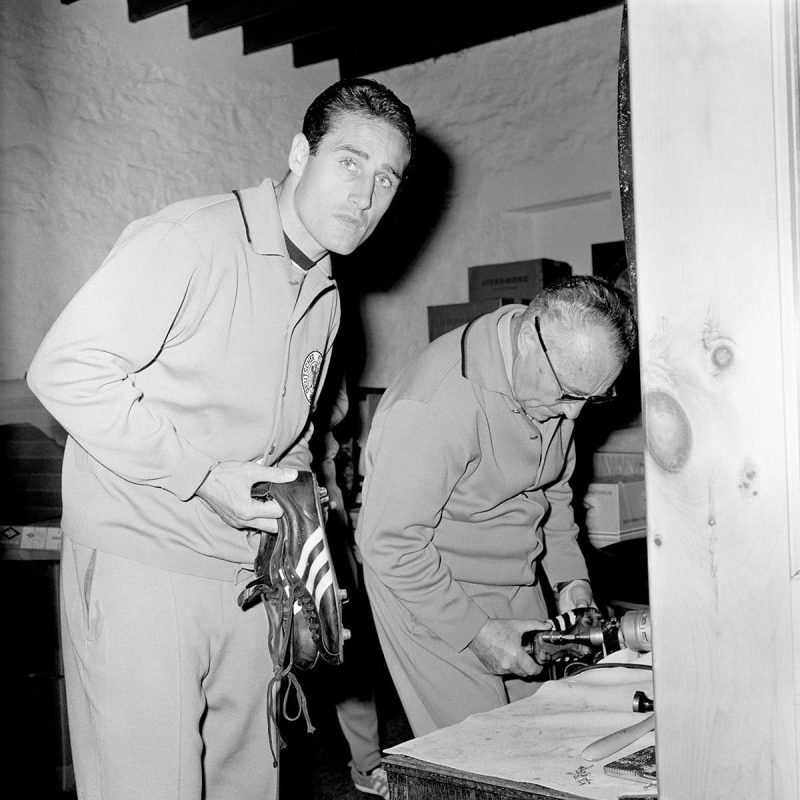
Adidas vs Puma: The Feud That Shaped Sportswear
The birthplace of Adidas and Puma, is divided by the river Aurach. Puma’s factory was located to the south and Adidas’s factory to the north. The two companies were the biggest employers in the area, and at least one member from each family worked for either of these giants. The result was a deep-rooted division between the employees of the two firms and their families, leading to an odd culture of avoiding conversations, separate bars, bakeries, and even barber shops. People would look down at each other’s shoes to determine whether they were affiliated with Adidas or Puma, which earned Herzogenaurach the nickname “the town of bent necks.” you showed you allegiance by the shoes you wore on your feet. It wasn’t uncommon to see families and friends who were once close now refusing to speak to each other because of their allegiance.
The sibling rivalry between Adolf(Adi) and Rudolf(Rudi) Dassler has led to the creation of two of the most iconic sports brands in history. Rudolf and Adolf Dassler were born in the small town of Herzogenaurach, Germany, in the early 1900s. They were raised in a family of shoemakers learning the trade from a young age. After witnessing World War I, the brothers returned home and started their own shoe company, the Dassler Brothers Shoe Factory.
Dassler Brothers Shoe Factory 1923-1943
The Dassler Brothers Shoe Factory quickly became known for its high-quality athletic shoes. In 1928 Lina Radke wore a pair of the brothers spikes and won gold in the 800m. In the 1930s, the brothers began supplying shoes to the German national soccer team, which helped to establish their brand as a leader in the athletic shoe industry.
1936 Berlin Olympics
Adi saw the 1936 Berlin Olympics as an opportunity to gain international exposure, particularly through American track-and-field star Jesse Owens. Dassler offered his shoes to Owens, who wore them when he won gold medals and shattered records. This association with Owens helped catapult Adidas into an international player in the sportswear field and increased sales.
Effects of WWII
Rudolf was drafted into the German army, while Adolf remained behind to run the shoe factory, which many say is what first caused their falling out.
In the early years of the war, the firm was partially converted to a factory to produce military material. Nevertheless, staff was reduced, and supply was hard to come by. By October 1942 worker shortage became so severe that Adi Dassler himself formally requested the use of five Soviet prisoners of war to man his production line. Right as the war was nearing a close in 1943 the factory was shut down after a bitter dispute between Adi and Rudi involving the employment of family and what to do with the factory. Rudolf, his wife and two children moved across the river, where he would take over the second factory of the Dassler firm. In their separation Adi retained the first factory.
During the separation of the firm between Rudolf and Adi, employees were given the option to choose which company to work for. Since Rudolf was mainly involved in sales and administration, most of the sales staff decided to work with him at the Würtzburger Strasse factory. The remaining employees, including most of the technicians and those involved in product development and production, stayed with Adi.
Post WWII and the Creation of Adidas and Puma
Adidas actually comes from a mix of two words, ‘adi’ which was Adolph’s nickname and ‘Das’ which is short for Dassler. Rudolf named his new company “Ruda,” taking the first two letters from his own names, Rudolf and Dassler. Shortly after, the company was renamed Puma. In the 1954 World Cup, Adidas sponsored the West German national team which won its first World Cup, gaining positive international coverage and getting a foothold in the international shoe market, which allowed it to grow faster and become bigger than Puma. However, in the 1970 World Cup, Puma won the business battle by sponsoring Brazilian footballer Pelé, whose star power greatly contributed to the improvement of Puma’s image in the eyes of the public and led to an increase in notoriety worldwide.
Creation of the ‘TeleStar’
TeleStar, which translates to “Star of Television” was first used in the 1970 FIFA world Cup and was originally created by Adidas to help improve the visibility of the soccer ball on the screen.
Continued Legacy
The iconic Puma “Formstrip” logo was introduced in 1958 and has become synonymous with the brand. In 1968, Puma introduced the “Clyde” sneaker, which was named after basketball player Walt “Clyde” Frazier. The Clyde was the first signature basketball shoe ever released. To make an attempt into breaking into the basketball market as well, adidas introduced the “Superstar” sneaker. Quickly becoming popular among basketball players and hip-hop artists alike. The legacy of Adidas and Puma continues to this day, with both brands enjoying great success in the global market. Adidas is currently the largest sportswear manufacturer in Europe and the second-largest in the world. Puma, on the other hand, is the third-largest sportswear manufacturer in the world. The two companies have continued to innovate and expand their product lines, with both brands now offering a wide range of athletic and lifestyle products.
Written By Sammy Aronoff






Discussion
Be the first to leave a comment